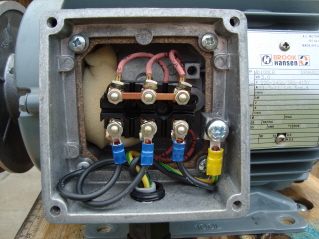Dear All,
I am hoping that I might be able to seek a bit of assistance from those what know?!
I have been working on a Brook Hansen 5hp conversion, with much support from others, thanks G-, Sparweb.
I have managed to get the rotor cut down and 20no N50(alledgedly) mags installed, 4 pole.
My next stumbling block is blade sizing, I usually opt for the trial and error approach as I am afraid I really struggle with anything maths related - having read the likes of Jerry and Zubbly it would appear I am going to be looking at carving some fairly sizeable blades? I can foresee stall as being a potential problem
Name Plate:

Motor:

I have tried to gather some data in the hopes it might help make a more educated guess than my normal methods (please excuse my terminology if it is not correct):
Open Voltage
VOC
RPM V
- 13
- 16.4
- 20.5
- 23.3
- 27.1
- 30.1
- 34.1
Into 12v battery
RPM V A (meter set 200m) A (meter set 10A)
- 12.9 0.3 0
- 14.1 6.4 0.34
- 17.1 15.5 1.17
- 17.7 23.5 2.29
- 18.8 36 3.33
- 19.9 48 4.51
- 23.2 61 6.42
- 10.73
I have not touched the internal wiring of the coils. Six wires out, removed jumper and connection block only.

I am trying this one as an experiment and my goal is to use it to charge a 12v battery bank. I was given two of these motors so this is really a learning curve for me - just hope I have not bitten off more than I can chew!!
I hope this info will suffice but please do say if more is required.
Many thanks in anticipation all.
Adam.